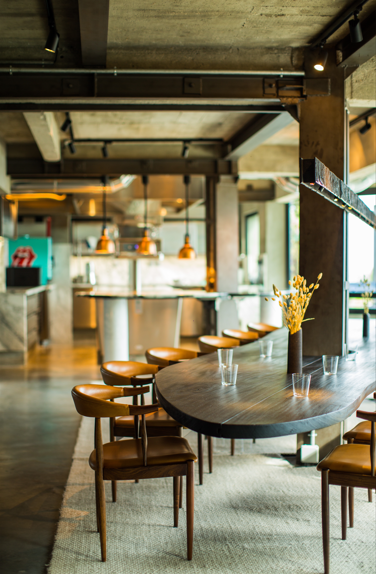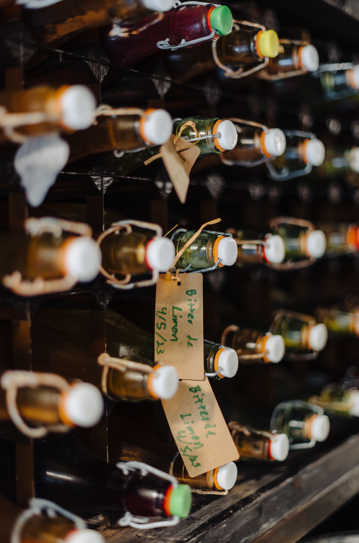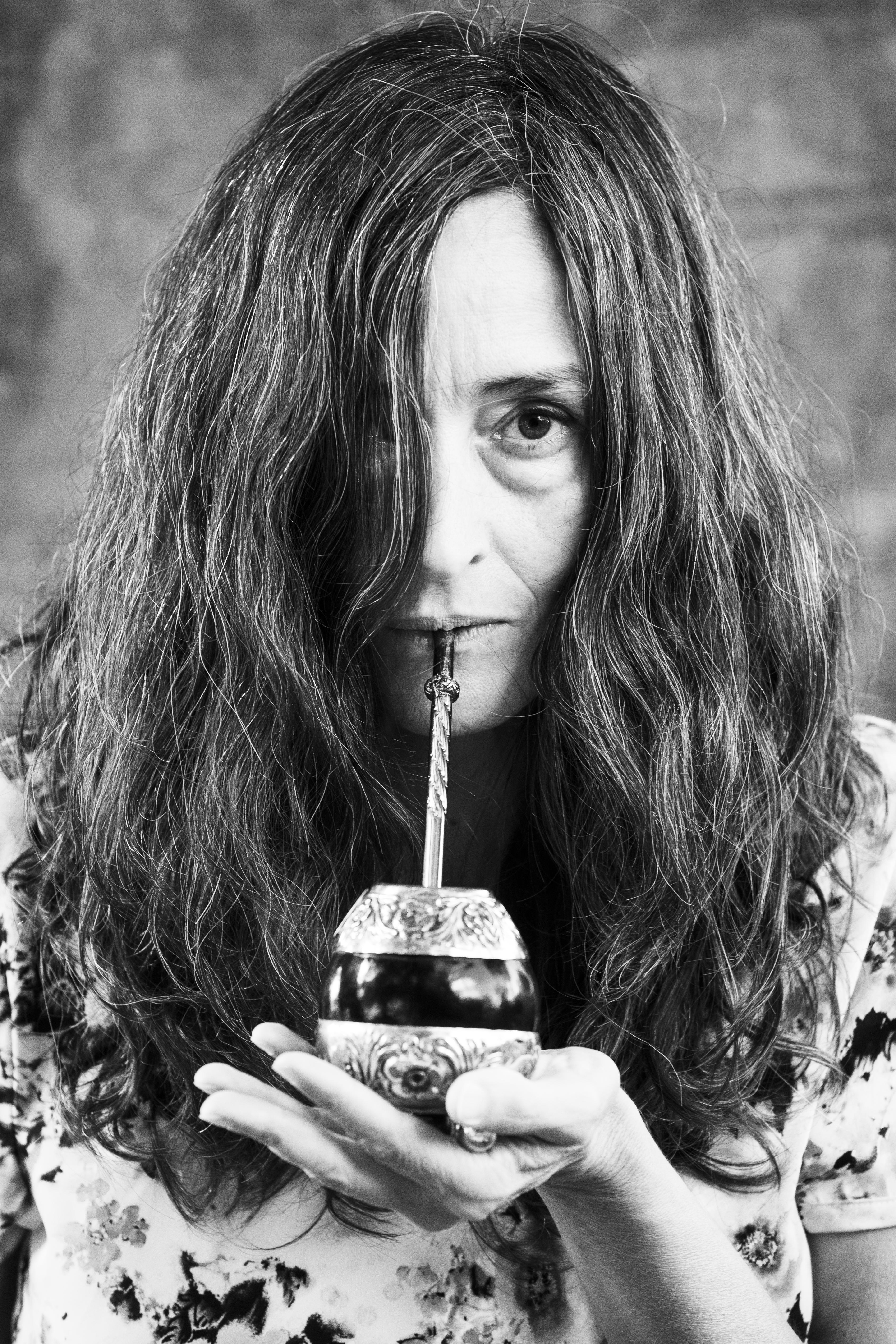Laura Colagreco (Mirazur*** ), take me to search
By Pomélo
(c) Coline Ciais-Soulhat & Florent Parisi for Le Mirazur***
Alongside her brother, chef Mauro Colagreco, the Argentinian is at the helm of the Mirazur***, a table named the best in the world in 2019 by the 50 Best ranking. Rare for a restaurant, the address has built up a team entirely dedicated to research and development activities. In addition to her role as head of the editorial and artistic direction of the place, Laura Colagreco is an integral part of it. She tells us.
Why did you initiate the creation of a team dedicated to research and development within the restaurant itself?
Laura Colagreco: "Research and development have always had a great place in the restaurant. When, in 2006, Mauro left Paris for Menton, he realized that he couldn't open a restaurant here, in the Alpes-Maritimes, with recipes imagined in Paris. He immediately understood that he had to go and meet this new territory, its history, its fields, its producers, etc... If this approach has guided him since he moved to the region, it was consolidated just before the lockdown, when we decided to set up a space totally dedicated to research, with a kitchen separated from the one of the restaurant. »
What types of profiles make up this R&D team?
LC: "At Mirazur, we want research not to remain locked up within the four walls of the kitchen. In other words, we always try to go far beyond the purely technical aspect, which presupposes above all a multidisciplinary approach. That's why we surrounded ourselves with diverse and varied profiles: cooks, students, a gardener, an ethnobotanist, an archaeo-anthropologist... All under the guidance of a team coordinator. Among them, some are only dedicated to research and development, while others intervene more occasionally. »
And what about your brother, Mauro Colagreco, in this team?
LC: "He initiated the creation of the team and follows our activities very closely, especially through periodic meetings. It is an opportunity to present to him our ideas, our reflections, our progress... During these meetings, it is up to him to share with us the points he would like us to deepen, to direct us towards the areas of work that interest him. But he trusts us completely. Mauro, for example, was at the initiative of a major research project on citrus fruits, which began last year and is still ongoing. An idea that inspired him to come from the Lemon Festival in Menton, during which we offer a menu entirely dedicated to citrus fruits. »
Who else can enter this research and development process?
LC: "Beyond the team and Mauro, we quickly realised that it was essential to organise regular exchanges with the dining room and the sommelier, to report on our progress. It's really important that they are aware of our work because, after all, they are the ones who make the link with the guests, they are the ones who report on all the work that is done behind the scenes. »
What does your research work consist of?
LC: "It is important to understand that what will guide all of our research is the question of sustainability. It is not an end in itself, but a common thread that constantly guides us. It seems impossible to respect the surrounding nature and its cycles without knowing the territory that surrounds us perfectly. Thus, a large part of our research focuses on the ecosystem of the region, which is particularly rich, which explains why this is the only area in the whole of Western Europe to have been continuously occupied by human life since prehistoric times. »


What kind of advances did your research lead to?
LC: "Very close to the restaurant, we are lucky enough to have two major archaeological sites. In line with what I have just explained, we have recently taken an interest into it to try to understand, through the prism of food, how the biodiversity of these places has evolved over time. For example, some plant varieties, such as millet and chenopodyum, have been found to be more resistant to climate change than others due to their particular photosynthesis. In the environmental context we know, we thought it would be a good idea to introduce some of these ancient and resilient species into our gardens. »
Do you have any more concrete examples?
LC: "Of course I do ! Through these archaeological sites, we have also looked at the way in which humans have eaten throughout history. In this sense, soil analyses on the archaeological site of Terra Amata, on the slopes of Mont Boron, in Nice, have been carried out to try to find out what humans were burning at the time on these lands. We then realised that there were traces of posidonia [seagrass not to be confused with algae, editor's note], which are now threatened. It turns out that they were once used to smoke and preserve meat. This discovery inspired one of Mauro's signature dishes: a pigeon left marinated with posidonia for a week, then smoked and cooked in a seaweed and posidonia butter. This is also how we discovered the extent of the preservation techniques of yesteryear, such as fermentation, which we use a lot in restaurants, both for its taste and anti-waste interest. In fact, we have worked on the design of a historical menu, which would be a form of synthesis of the results of our research on the subject... To be continued. »

Is it in this anti-waste approach that the chef launched his range of delicatessen last year?
LC: "Exactly! Through our research on fermentations, we have done a lot of work around vinegars. To the point of creating a dedicated vinegar cellar within the restaurant. It is made up of a multitude of vinegars to which we have added products from our land that we did not want to throw away, such as elderberries, pears, plums or persimmons. These vinegary condiments are as useful in the kitchen as they are for making non-alcoholic drinks, for example. It is thanks to all this that the idea of developing, in parallel with the restaurant, a delicatessen part, in order to use our products in their entirety was born. In 2024, Noyau was born on Mauro's initiative, with the idea of using the maximum of the surplus of our land. Today, the range consists of vinegars, jams (mandarin, bitter orange, pomelo), honey and olive oil. »
You are also at the origin of a kombucha brand. Can you tell us more about it?
LC: "Just before the lockdown, Mauro told me that he wanted to deepen the range of non-alcoholic drinks that we offered in restaurants. We then did a lot of research, together with the sommellerie, around the wild plants of the land to try to develop fermented drinks. During the successive lockdowns that followed in France, I was able to work on kombuchas, kefirs and natural sparkling wines made from products mainly from our orchard. When it was time to reopen, Mauro wanted to serve some of these drinks to customers. Over time, the sommelier has even developed food and non-alcoholic drink pairings. At the same time, I created my brand of drinks called Kruda, which can be found in delicatessens and restaurants, in Paris and the region. »